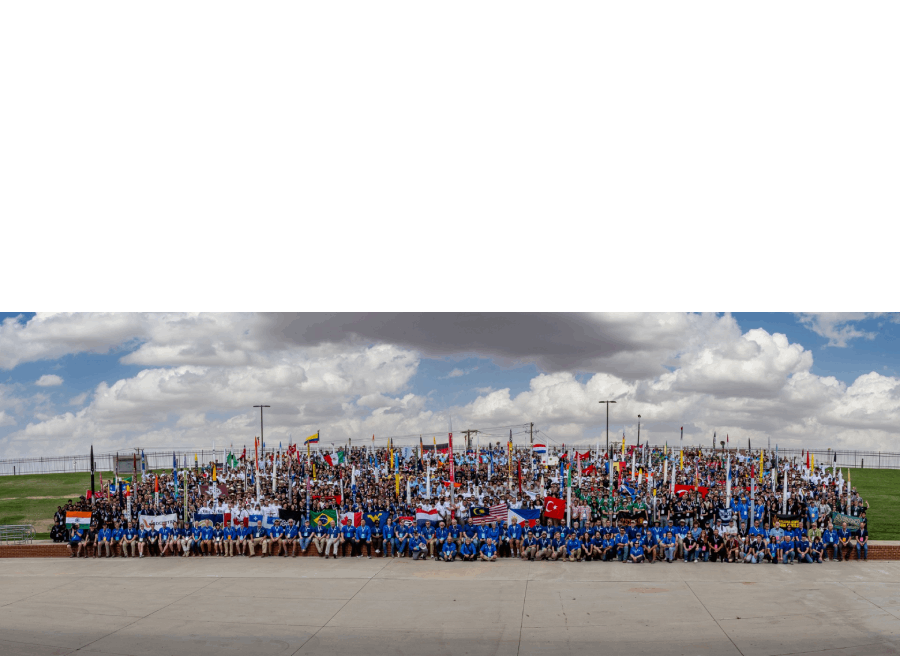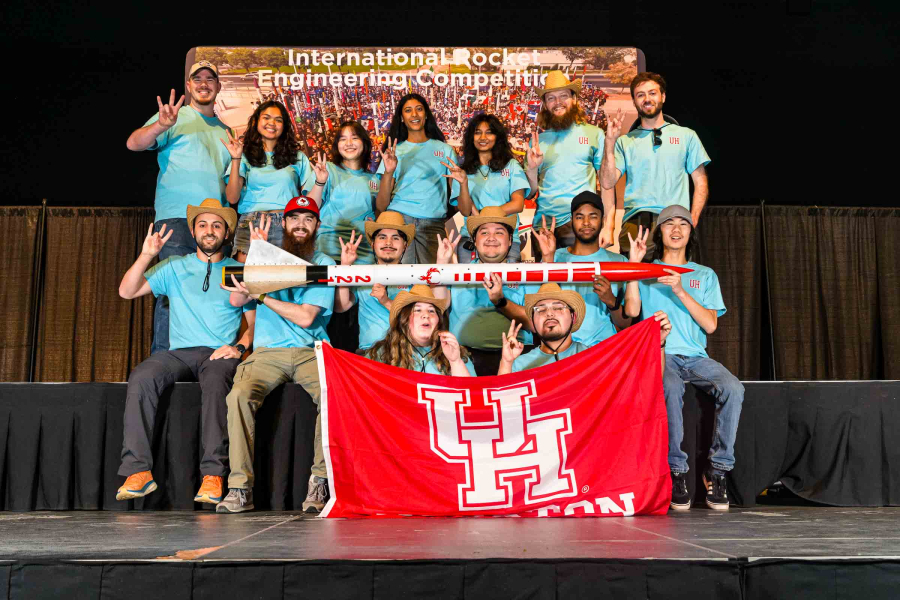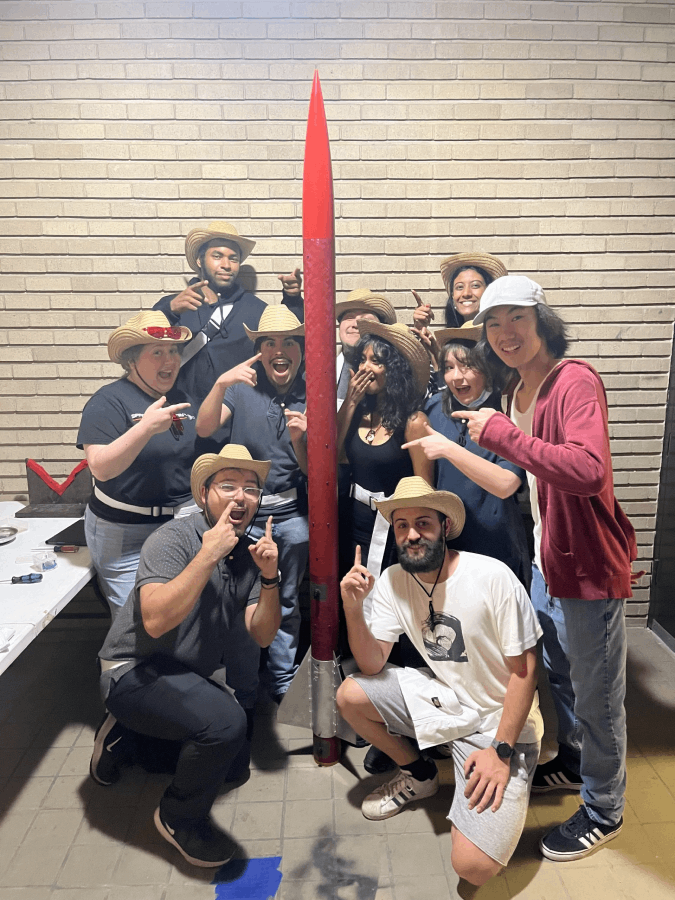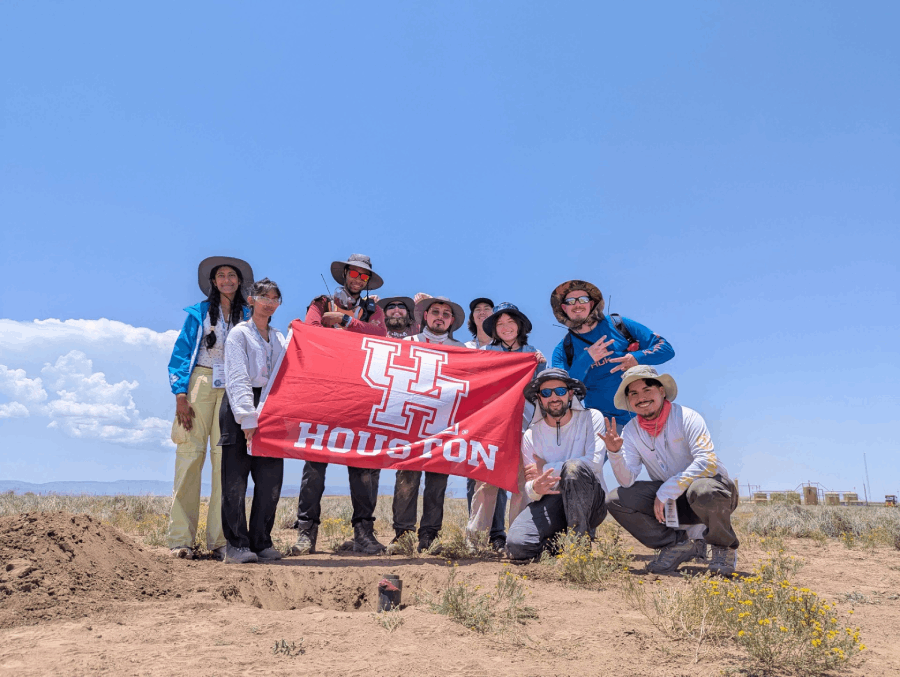The Space City Rocketry team of the UH chapter of the American Institute of Aeronautics and Astronautics (AIAA-UH) was recognized for best performance in the Space Dynamics Laboratory (SDL) Payload Challenge at the closing ceremonies of the International Rocket Engineering Competition (IREC) held this summer in Midland, Texas.
Space City Rocketry — overseen by Project Manager Isabella Decan, a mechanical engineering senior — is one of two competition teams under the four-team AIAA-UH umbrella.
While the Cullen College of Engineering doesn’t currently offer an undergraduate degree in aerospace engineering, “AIAA is a space that provides us with the opportunity to develop skills, work on projects and gain more knowledge about the aerospace industry,” Decan said. In addition to professional development opportunities, the organization also offers many project-based ways to get involved.
Decan describes the payload challenge as “a competition within a competition,” which focuses on the inclusion of experimental or otherwise scientifically relevant payloads in addition to the performance of the rocket itself.
“Teams aren’t required to have a functional or scientific experiment within their payload, but we wanted to do that because we have students who are very skilled and knowledgeable in specific areas,” she said.
This year, the team focused on the effects of low hypergravity — gravitational forces exceeding those on the surface of the earth — on fertility. The experimental payload on their rocket, Phoenix, consisted of sea urchin sperm.
“Our payload leads are recently graduated biology majors, and one of them — Kimeera Paladugu — studies fertility,” said Decan. “She developed all of these procedures for analyzing the sea urchin sperm before and after [launch] to see what effects it might have had on fertility across different parameters.
“It’s really interesting in that it’s not something that’s ever been done before, because usually when researchers study the effects of gravity and launch forces, they do so by recreating the g-force using a centrifuge. It’s not common for someone to actually put samples on the rocket at this scale and have it reach those numbers, so this was a very unique approach.”
Each year, the IREC payload challenge outlines a list of particular focus areas to guide participating teams in their project development. This year’s foci primarily related to robotics, artificial intelligence, and infrared.
“We had absolutely nothing to do with those suggested topics and still succeeded,” said Decan. “The judges really liked our experiment and how much thought we put into the engineering considerations, the structure, the procedures, the whole scientific analysis — a lot of research went into it, and they really appreciated the professionalism and ingenuity with a project that had a clear mission as well as value for the aerospace industry and for society. We didn’t do a project just for the sake of doing something cool; we did something that had real implications for scientific research in the aerospace and space medicine field.”
AIAA-UH has competed at IREC in the past, but this year marks the group’s first award win.
“It’s been exciting and motivating for the team to know that this is something we can achieve; it has set the bar for next year. We know that the expectation is going to be very high for UH to present an interesting, valuable research project for the payload challenge.
“In general, we’re excited to build on the knowledge that we’ve gained and the technical skills we’ve developed over the last year. We’re very proud that we got the opportunity to represent the university in that light, especially with a research-focused project. We had a really good experience, learned a lot and had a lot of fun,” Decan said.



